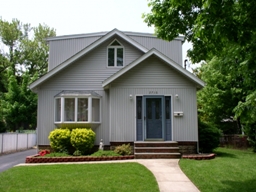 Last week’s economic news included reports on job openings, retail sales and recurring reports on mortgage rates and new jobless claims. Job openings and hiring increased, which provided further evidence of stronger economic conditions. Retail sales were flat in July, new unemployment claims dropped and mortgage rates changed little.
Last week’s economic news included reports on job openings, retail sales and recurring reports on mortgage rates and new jobless claims. Job openings and hiring increased, which provided further evidence of stronger economic conditions. Retail sales were flat in July, new unemployment claims dropped and mortgage rates changed little.
Labor Reports Suggest Stronger Economic Trends
The Labor Department reported more job openings in June with 5.60 openings as compared to 5.50 million job openings in May. According to the Job Openings and Labor Turnover Survey, 5.13 million workers were hired in June as compared to May’s reading of 5.15 million hires. June’ JOLTS report also showed that voluntary quits were nearly double the rate of quits during the worst part of the recession. Analysts consider quits an indicator of worker confidence in job markets; in times when jobs aren’t easily found, workers are more likely to stay with current jobs rather than risking uncertainties associated with quitting.
New jobless claims were lower with 266,000 new claims filed against the prior week’s reading of 267,000 new claims filed and expectations of 265,000 new claims filed. Last week’s reading continued a long streak of new jobless claims under 300,000 per week. Labor market trends impact housing markets, as prospective homebuyers typically consider job security as a significant factor in decisions to buy homes.
Mortgage Rates Show Little Change
Freddie Mac said that average mortgage rates held near steady readings last week. The average rate for a 30-year fixed rate mortgage rose by two points to 3.45 percent; the average rate for a 15-year fixed rate mortgage was also two basis points higher at 2.76 percent and rates for a 5/1 adjustable rate mortgage averaged 2.74 percent. Discount points averaged 0.50 percent for all three loan types reported. Consistently low mortgage rates help to ease concerns caused by rapidly rising home prices caused by short supplies of available homes.
Consumer sentiment fell short of the expected index reading of 91.50 with a reading of 90.40 but surpassed July’s index reading of 90.00. Participants in the University of Michigan Survey cited concerns over increasing prices coupled with slow income growth. Analysts said that consumer participants had grown acclimated to low mortgage rates, which may have offset consumer concerns about stagnant wages and higher prices.
What’s Ahead
This week’s scheduled economic releases include the National Association of Home Builders Housing Market Index, Commerce Department Consumer Price Index and Core CPI reports along with weekly readings on mortgage rates and new jobless claims.
 Last week’s economic reports included construction spending, personal income, and multiple reports on employment. Freddie Mac’s mortgage rates survey and new jobless claims were also released.
Last week’s economic reports included construction spending, personal income, and multiple reports on employment. Freddie Mac’s mortgage rates survey and new jobless claims were also released. Last week’s economic reports included S&P Case-Shiller Housing Market Indices, reports on new and pending home sales, Freddie Mac’s weekly mortgage rates survey. The Federal Reserve released its customary statement after the scheduled Federal Open Market Committee meeting concluded; the Committee did not raise the federal funds rate of 0.25 percent, but indicated that economic risks were fewer, which suggested that the key Fed rate may be increased in September.
Last week’s economic reports included S&P Case-Shiller Housing Market Indices, reports on new and pending home sales, Freddie Mac’s weekly mortgage rates survey. The Federal Reserve released its customary statement after the scheduled Federal Open Market Committee meeting concluded; the Committee did not raise the federal funds rate of 0.25 percent, but indicated that economic risks were fewer, which suggested that the key Fed rate may be increased in September. According to the S&P Case-Shiller 20-City Home Price Index, home price growth in May dropped to a seasonally adjusted annual rate of 5.20 percent as compared to April’s reading of 5.40 percent. Analysts said that low mortgage rates continue to support housing markets, but also noted that affordability due to rising home prices is sidelining some would-be buyers. High demand for homes coupled with slim supplies of available homes have driven prices up for months; analysts said that “tentative signs” of slower gains in home prices were seen.
According to the S&P Case-Shiller 20-City Home Price Index, home price growth in May dropped to a seasonally adjusted annual rate of 5.20 percent as compared to April’s reading of 5.40 percent. Analysts said that low mortgage rates continue to support housing markets, but also noted that affordability due to rising home prices is sidelining some would-be buyers. High demand for homes coupled with slim supplies of available homes have driven prices up for months; analysts said that “tentative signs” of slower gains in home prices were seen.
 Home builder confidence fell slightly in June to a reading of 59 according to the National Association of Home Builders Housing Market Index. Analysts had expected no change to June’s reading of 60. June components of the HMI were also lower.
Home builder confidence fell slightly in June to a reading of 59 according to the National Association of Home Builders Housing Market Index. Analysts had expected no change to June’s reading of 60. June components of the HMI were also lower.